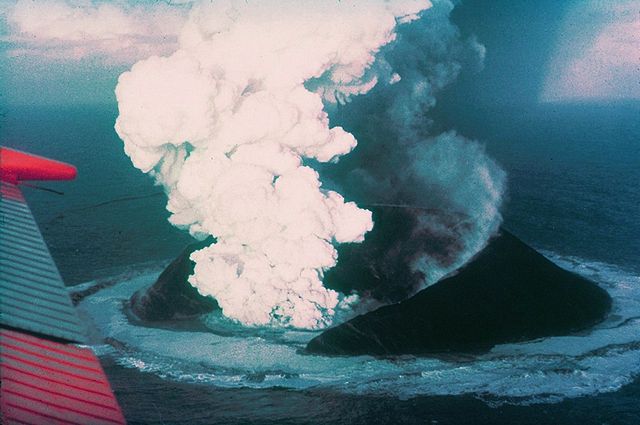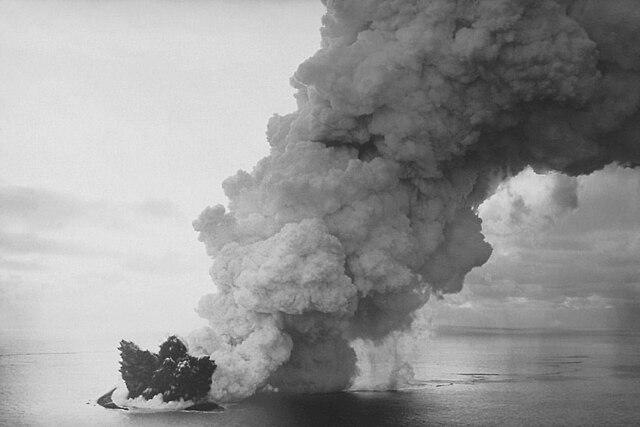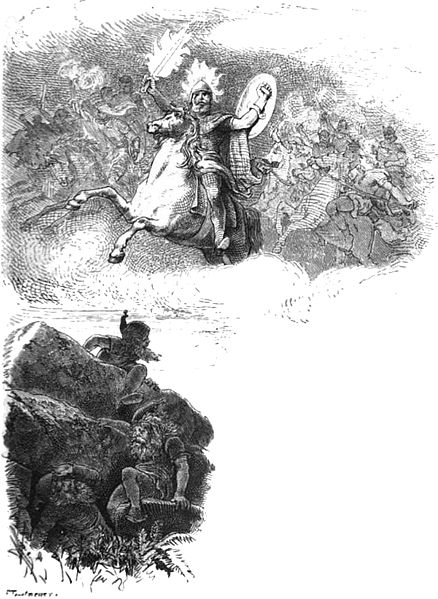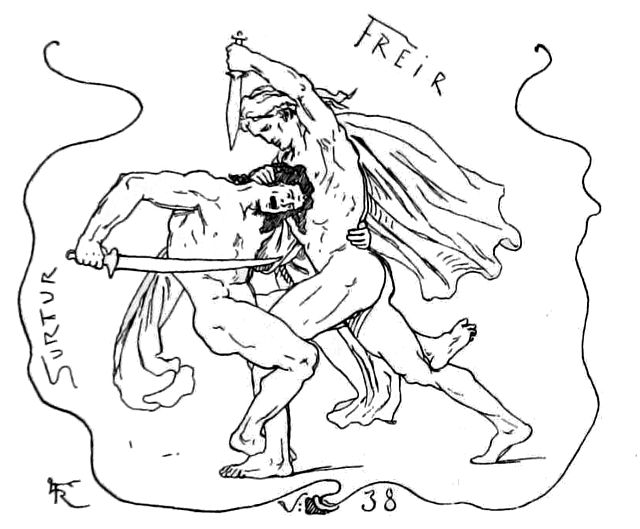Surtsey is an uninhabited volcanic island located in the Vestmannaeyjar archipelago off the southern coast of Iceland. At 63.303°N 20.605°W Surtsey is the southernmost point of Iceland. It was formed in a volcanic eruption which began 130 metres below sea level, and reached the surface on 14 November 1963. The eruption lasted until 5 June 1967, when the island reached its maximum size of 2.7 km2 (1.0 sq mi). Since then, wave erosion has caused the island to steadily diminish in size: as of 2012, its surface area was 1.3 km2 (0.50 sq mi). The most recent survey (2007) shows the island's maximum elevation at 155 m (509 ft) above sea level.
Surtsey, sixteen days after the onset of the eruption
Surtsey's ash column rises over the newly forming island
The eruption vents in 1999
The island of Surtsey in 1999
In Norse mythology, Surtr, also sometimes written Surt in English, is a jötunn. He is the guardian of Muspelheim which is along with Niflheim, the only two realms to exist before the beginning of time, and the greatest of the fire giants. Surtr is attested in the Poetic Edda, compiled in the 13th century from earlier traditional sources, and the Prose Edda, written in the 13th century by Snorri Sturluson. In both sources, Surtr is foretold as being a major figure during the events of Ragnarök; carrying his bright sword, he will go to battle against the Æsir, he will battle the major god Freyr, and afterward the flames that he brings forth will engulf the Earth.
The Giant with the Flaming Sword (1909) by John Charles Dollman
Surtr with the Flaming Sword (1882) by F. W. Heine, based on a plaster frieze designed by Friedrich Wilhelm Engelhard (1859)
Battle of the Doomed Gods (1882) by Friedrich Wilhelm Heine
The battle between Surtr and Freyr at Ragnarök, illustration (1895) by Lorenz Frølich








